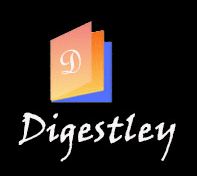Restoration services are essential. When homes face fire, water, or mold damage, people need quick and professional help. But offering great service isn’t enough anymore. The real challenge is being found when people need you most. This is where a solid marketing strategy becomes vital for success.
Table of Contents
What Changed in the Restoration Industry?
In the past, word of mouth and a few print ads brought enough leads. That’s no longer the case. Most customers now start their search online. They type a few words into Google and choose from the top results. If your company is not there, you’re missing out.
Competition has also grown. More businesses enter the market every year. At the same time, customers are smarter and more careful with their choices. They check reviews. They compare websites. They expect quick replies.
This is why a clear and targeted plan is needed to stand out.
Digital Visibility Is No Longer Optional
Your online presence is often the first impression customers get. It should be strong and clear. A clean website, helpful content, and easy contact options all matter. But that’s just the start. You also need to show up when people search for services like yours.
Search engines use many factors to rank pages. Relevance, speed, mobile design, and user trust all play a role. To meet these demands, your strategy needs to include both technical and creative work.
This is where restoration marketing becomes the key to reaching your audience.
What Is Restoration Marketing?
It’s a set of methods tailored for restoration companies. These methods help you attract the right people at the right time. The goal is to bring steady leads, build trust, and grow your business.
It goes beyond general marketing. It speaks directly to people dealing with stress after damage to their property. Your message must be clear and caring. At the same time, your offers must be easy to understand.
This includes digital tools, local outreach, and relationship building.
Key Components You Should Focus On
Let’s break down what a working strategy includes:
1. Search Engine Optimization (SEO)
SEO helps your site show up in search results. It covers keywords, content, site speed, and backlinks. Use simple terms your customers search for. Think about what they need and how they ask for it.
Local SEO is also crucial. You want to show up in maps and nearby searches. Set up your Google Business Profile. Ask happy customers for reviews. Use local phrases in your content.
2. Paid Ads for Quick Visibility
SEO takes time. Paid ads help you get leads faster. Platforms like Google Ads or Facebook let you target people by location and interests. Make sure your ad leads to a helpful page. Give them a reason to contact you.
3. Helpful Content That Builds Trust
Your website should not just talk about you. It should answer questions. Use blogs, FAQs, and videos to help people learn. Topics like “What to do after water damage” or “Signs of mold in your home” are great places to start.
This type of content builds trust and shows that you care.
4. Email and Follow-up Systems
Not every visitor calls you right away. That’s normal. A follow-up system helps you stay in touch. Send helpful emails, updates, or tips. This keeps your name in mind when they’re ready to act.
5. Reputation and Review Management
Online reviews play a huge role in decisions. Ask your customers for feedback. Make it easy. You can send a simple link after a job is done. Respond to all reviews. Thank those who praise you. Address concerns from unhappy clients with care.
6. Social Media Outreach
Use platforms like Facebook, Instagram, or LinkedIn to share before-and-after stories. Post tips, client feedback, and behind-the-scenes shots. This makes your business feel more human and real.
It’s also a great place to run ads or promote offers.
Why One Size Doesn’t Fit All
Every restoration business is different. The size of your team, your location, and your services affect your approach. Some companies focus on water damage. Others deal with fire or mold. Your marketing plan should match your strengths.
Tailored restoration marketing lets you reach the people who need your exact help. It saves you time and gets better results. A custom plan works better than copying what others do.
Measuring What Works
Marketing isn’t guesswork. You need to track what brings results. Use tools like Google Analytics, ad dashboards, and call tracking. Look at clicks, calls, emails, and form fills. These numbers show you what’s working.
Based on results, adjust your approach. Focus more on what performs well. Cut what doesn’t. Over time, this improves your return on investment.
Building Long-Term Relationships
Your first job with a client may not be the last. Many restoration firms also offer cleanup, remodeling, or inspections. Staying in touch can lead to repeat work.
Sending a yearly email, a thank-you note, or a care tip shows that you value them. This can lead to referrals too. People trust companies that care beyond the sale.
Mistakes to Avoid
There are common errors that can waste time and money:
- Ignoring mobile users: Most people use phones to search. Your site must be mobile-friendly.
- Skipping reviews: Not asking for them means missing out on trust-building.
- Lack of follow-up: Many leads are lost due to no response or delay.
- Talking too much about the business: Focus on the customer’s problem and solution.
- Copying competitors: What works for them may not work for you.
Final Thought
You might be great at fixing damage, but to keep your schedule full, people need to find you first. That’s what marketing is about. It helps the right people trust you at the right time.
Smart targeted restoration marketing is not just a choice anymore. It’s a must-have tool for growing and protecting your business. With the right plan, your service can reach more people who truly need it.
Apart from that if you want to know about “Home Is Where the Heart Is: The Top Home Renovation Tips of 2023” then please visit our Home Improvement Category.
















